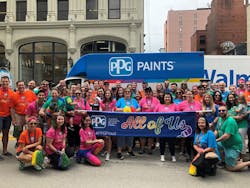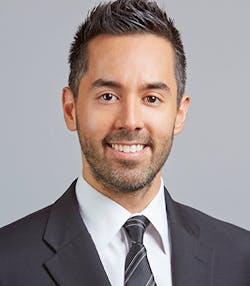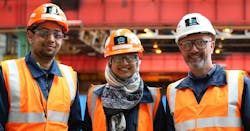Last summer, when the police killing of George Floyd ignited widespread public outrage, many corporations promised to re-evaluate and devote more resources to their diversity and inclusion initiatives. What would have impact, and what were hollow gestures? How could they show their customers/communities that they cared about more than 52% of the U.S. population, and that they welcomed ideas and perspectives that didn’t come from middle-class-straight-white-males?
At global automotive supplier Brose, Wilm Uhlenbecker, president of North American operations, announced plans for the company to do more around diversity. “It was something we had, it was in the handbooks, but we didn’t have such a primary focus on it,” says Lisa Basila, vice president of human resources at Brose North America. A first step in that direction: partnering with the nonprofit Center for Automotive Diversity, Inclusion and Advancement to develop programming and set performance measures around diversity.
Similarly, the Manufacturing Institute, which had been focusing on bringing more women into the sector, decided to accelerate plans already in progress around racial equity. MI (which is the National Association of Manufacturers’ workforce development and education partner) organized a series of diversity roundtables with leaders from Pfizer, Stanley Black & Decker, and Fender. They also increased the racial diversity of their advisory committee and built out case studies and best practices for manufacturers around diversity issues in the workplace.
For manufacturers, the incentive to pay real attention and commit real resources to diversity, equity and inclusion (DE&I) is good business. “There are so many studies that show that diversity drives innovation,” says Marvin Mendoza, global head of DE&I at paint and coatings manufacturer PPG. “I have seen it time and time again. Putting a group of people together with different backgrounds and experiences—the innovation that comes out of that group when they can challenge each other robustly is amazing.”
Attracting a more diverse workforce, adds MI Executive Director Carolyn Lee, “is essential to our ability to be competitive as a sector, and continue to attract the next generation.” The good news is that some progress has been made: “We have to make the case less about there being business benefits,” says Lee. “I think that is more understood now than it was even three or four years ago.”
But the societal call for diversity in both leadership and the workforce writ large is also becoming more intense. For public companies, part of that leadership diversity push is external, driven by new NASDAQ and large-investment-firm requirements that boards have a measure of gender and racial diversity.
“It has been a glacial pace in the push towards women on boards,” says Mark Rogers, CEO of Board Prospects, a platform that companies use to identify and recruit board members. “That isn’t what you’re going to see when it comes to racial diversification. There has been an absolute shift in the benefits of diversity. And it isn’t going to go away.”
How can manufacturing leaders do better on DE&I, in ways large and small? IndustryWeek tapped into the wisdom of some leading manufacturing diversity experts to share their insights.
Understand What the Terms Mean (& What They Don’t Mean)
Diversity doesn’t mean the same thing in every part of the country, says Lee. If your plant is in rural Iowa and you have unfilled jobs, diversity might mean targeting your recruiting toward women, veterans, people with disabilities, or Iowa’s 6.3% Hispanic population. Your target could also be diversity of age, if your workforce is 50-plus, or retired workers coming back part-time if you have a knowledge vacuum. Or the second-chance population returning from incarceration, if your plant is near Chicago, where 21,000 people return from prison every year.
Or maybe diversity means fostering an environment where LGBTQ people want to work, because they can be their full professional selves and also feel comfortable talking about their partners and families like straight people do. “I have news for these companies that think they have no gay employees,” says Patti Flynn, a consultant for The Equality Institute who spent 25 years working in manufacturing. “You have gay employees. And if you’re big enough, you have a transgender employee who is afraid to say something to anyone. Half of LGBTQ people don’t’ feel comfortable being out in the workplace. When we have a secret of that magnitude that we’re hiding, it interferes with our ability to really engage and connect with the other people at our job and to establish trust levels with the folks that we’re working with, and to really connect in ways that make the work meaningful and the business move forward.”
Inclusion and equity expand on the meaning of diversity. Inclusion means not just checking off a box but creating an environment where every individual can be their full professional self at work and contribute to the business’s success. And equity indicates fair treatment and equality of opportunity for all, and acknowledging and addressing the obstacles that some groups have faced.
PPG's Marvin Mendoza
"It’s not just counting your populations,” says MI’s Lee. “It’s the inclusion part, it’s about retention, how do employees feel about their workplace?
Are they bringing all of their innovation and ideas and creativity, their whole selves to work?”
Have a Long Game for High-Level Diversity
“If you’re waiting to focus on diversity and inclusion until you have a representative leadership, you’re going to be waiting a while,” says Michael Bach, author of the book Birds of All Feathers: Doing Diversity and Inclusion Right and CEO of the Canadian Centre for Diversity and Inclusion. If you already have highly competent people at the top of your organization, it could take years for leadership positions to open up, Bach says. Have a succession plan in place that covers the long-term development of or search for diverse candidates that have the skill set you require.
“At least there’s a process in place, and you’re working towards it,” says Bach. “And so when the chief technology officer or the chief finance officer retires or takes another job, then you go, ‘OK, here’s their three successors—interview them, pick one,’ and they’re all people of color.’ But I promise you, if you do nothing, nothing changes.”
Bach recently advised an entertainment corporation he’s working with, “You need to make a public statement and say, ‘You know what, the next three hires into our leadership of 10 people will be people of color, guaranteed. We will not stop until we find the right person for the job’—always skill set first. ‘But they will be people
of color.’ It takes time to change the face at the top of the house.”Three is the generally accepted number to have a real shift in top leadership, says Bach. “All the research tells you that when you look at a senior executive or board of directors, when it comes to women, one women is seen as tokenizing. Two women are seen as scheming. Three women, the behavior starts to change” for leadership overall.
It’s also important for the chairman or CEO to put the new person’s skills front and center, says Bach, so that others in the company or on the board know that these new leaders are “rock stars.”
Focus on ‘The Frozen Middle’
Bach wrote Birds of All Feathers for “the people in the middle of the organization who just didn’t get it.” With middle managers, “Notoriously, what we see is you get a lot of buy-in at the top of the house, and you get a lot of grassroots people who really care and have a personal connection to [DE&I].
“And then you get this wedge that we call the ‘frozen middle,’ and they’re middle managers who are quite honestly just trying to get through the day—’We’re going to fire 10% of the staff, but you’re still expected to deliver the same output as you would with 100%.’—They’re being asked to do one more thing, as it relates to diversity and inclusion, and quite honestly, they don’t get what’s in it for them.”
Leaders best use a carrot, not a stick, approach with middle managers on diversity initiatives, says Bach: “They have to make the case to the middle manager why their life is going to get better. Rather than saying, ‘You need to make sure that your engagement scores are high,’ saying that, ‘If your engagement scores are high, it means your team is more productive; it means your business unit is more profitable.’ That needs to be articulated very succinctly, so that it gets a middle manager to take personal accountability.”
Mendoza, who joined PPG in November, says that C-Suite conversations around diversity don’t translate easily because managers might have 10 or 20 other priorities. “At a lot of manufacturing companies, the dialogue happens a lot at the top, when it’s needed so much at the bottom, because that’s where diversity generally sits.”
“There’s pockets of every industry and sector where the message just hasn’t gotten down to all levels of employees,” he adds. “That’s what I’ve found pretty consistently across organizations and manufacturing. At the leadership level, there’s commitment because it’s been such a C-Suite topic especially over the last couple of years. … I’m finding that I need to do education at the plant level, and globally that is one of my first things to do. One-on-one training on ‘What is diversity, equity and inclusion and what isn’t’ will be really important.”
Make Diversity a Part of Lean
Conversations need to happen on the shop floor. “You have to have a very strategic approach,” says Bach. “And you need to put people through training, and figure out how you’re going to do that and maintain shifts and keep the product moving.”
Bach, who is white, says George Floyd’s killing was traumatic for him, “so I can only imagine how traumatic it was for people who are from African-American communities. I think in that case, the onus is to say, ‘You know what, we’re going to stop for a second. And we’re going to have a conversation about what just happened, because we need to talk about it. We cannot have the continuous improvement, we cannot have lean Six Sigma if we don’t have an inclusive environment.’”
Diversity conversations can fit naturally into lean, says Bach. “Every manufacturing environment I’ve ever worked in has a safety moment, which is great. Safety is so critically important. Why don’t we have a diversity moment, which is the perfect educational opportunity to say, ‘I, as an individual, I’m going to share a story about my life, something that is part of my identity.’ And then as a group, you talk about how [the group] can be more inclusive.
“There are always going to be issues with racism and sexism and homophobia. But if you’re calling it out, if you’re setting a tone, the issues start to decrease. If you don’t do it, the issue will just continue.”
Gather Data
It’s important to look at demographics of your community to see whether your leadership and workforce are representative of the community at large, or where you’re falling short, says Bach. If the demographics of your workforce don’t roughly fall in line with those of the community, it’s a signal that you don’t have enough talent, or the right talent.
“If you’re operating in the city of Atlanta, where it’s 68% African-American, if you look around your office and there are no black people, well, this is a gap,” he says.
One-on-one interviews, inclusion surveys and focus groups add context to the numbers. “That’s all about understanding belonging, understanding the culture, and whether or not it’s an environment where people can be successful.”
Bach also suggests looking at the demographics of the voluntary and involuntary turnover rates at your company. “I worked with one company—they did layoffs in 2008 or 2009 because of the economic crisis at one of their offices, and, like, 80% of their layoffs were African-Americans. They didn’t realize it until after the fact. We looked at the numbers and went, ‘Oh, we have a problem,’ but the damage was already done.”
Choose Respect, Not Regulation
As the 2020 U.S. presidential election approached, Goodyear Corp. shared a policy banning attire endorsing political candidates or campaigns. Pro-Trump “Make America Great Again” hats were prohibited, but Black Lives Matter attire was declared not political and thus permitted.
Pro-Trump employees who felt they were being treated unfairly shared their resentment on social media; the incident went viral, magnifying the situation and not making anyone’s life easier at Goodyear.
For Bach, the HR policy came off as one-sided and unfair. “Black Lives Matter is totally about politics,” he says, adding that regulating work attire can be a “very slippery slope.” Inclusion must include everyone. “You cannot shut down a dissenting voice just because you don’t like it.”
Best to focus instead on a message of respect, says Bach. A leader can tell a worker whose MAGA hat has brought complaints: “You are welcome to support the now-former president, totally up to you; you’re welcome to wear his hat if that’s your belief system. Understand that the president was inciting some pretty exclusionary behavior—whether it’s sexism, racism, homophobia, transphobia, anti-Islamic behavior. Don’t bring that into our workplace. You must be respectful. We don’t want to hear anything about his anti-immigrant policies, his anti-anything policies. You don’t talk politics in the office.’”
Brose employees Chris Nuccio, Rhonda Clarke, Jason Jia, Lauren Michalsky, Jorge Parra, Jessie Richmond, and Michael Robinson.
One of the more common “sparks leading to fire” work confrontations that Bach sees come from fundamentalist Christians lecturing LGBTQ people about their lifestyle. It’s important for a manager to make clear that everyone is entitled to their opinion, and they can have an honest dialogue about a person’s lifestyle or experience if that person’s OK with it, but they must treat others with respect.
“That means, ‘I don’t want to hear any homophobic comments,’” says Bach. “I don’t want to hear any discriminatory words coming out of your mouth. If I hear it, you’re out of here, or you’ll be written up.’ Unions and bargaining units can make that more difficult, “but if there’s a zero-tolerance policy to exclusionary behavior, it needs to be enforced. And then the first time it happens, it’s the last time it happens. People say, ‘Oh, OK.’ And for people who are ardently against that level of inclusion, they’ll leave the company.”
Involve Top Leaders in Employee Resource Groups
Employee Resource Groups, or ERGs, are voluntary, employee-led groups that promote diversity within an organization and are centered on a particular race and ethnicity, women, LGBTQ, veterans status, or even young employees and include not only members of those groups but “allies” as well. ERGs are common in corporate America, and some medium-sized companies have them. Some are primarily social—marching as a group in the local Pride parade or putting on an Asian festival for Chinese New Year—or focus on community volunteer work.
The social connection can be powerful; ERG’s served a critical need after the George Floyd and Breona Taylor killings over the summer “for employees to come together and feel connected and talk about the experiences of Black Americans in a safe space,” says Mendoza. But the most effective groups also have a direct line to top leadership at the company and “are tied to the business strategy and solving a business problem,” he says. “For example, there have been companies that I’ve worked with where a particular leadership team has a problem they’re trying to solve. Maybe they’re trying to create a new product, maybe marketing a new product, maybe it’s a financial goal they’re trying to achieve. … What I like is taking the top performers from each of those groups”—for instance, the Black, Latino, and women ERGs—“and having them work together to solve a business problem.”
That approach does a couple of things, says Mendoza: First, it creates mentorship opportunities “very naturally.” Second, the group’s success in solving an important problem gets the rest of company jazzed about the ERG and piques others’ interest in joining, even as an ally. Especially as an ally.
“It’s really cool when allies get excited,” says Mendoza. “As part of that, you’re driving inclusion. You’re driving that goal of bringing people together from different backgrounds to work and solve problems together.”
Arconic emphasizes diversity in its recruiting materials.
At aluminum manufacturer Arconic Corp., each ERG—African Heritage, Hispanic, Next Generation, Veterans, Thrive (Women’s) and Spectrum (LGBTQ+)—has an executive sponsor. Encouragement to get involved comes from both the top and grassroots levels, and the groups are well-funded. Last year, each of six ERGs selected a nonprofit group to receive $60,000 from the Arconic Foundation (for a total of $360,000) as part of Arconic’s diversity awareness campaign, says Melissa Miller, Arconic’s chief human resources officer. The groups, says Miller, boost employee and community engagement through outreach, offer learning and development opportunities, and “help position Arconic as a global employer of choice through strategic recruiting activities.”
Brose NA’s president has shared “fireside chats” with the company’s women and multicultural ERGs. “Maybe some in our organization thought the Black Lives Matter movement was a little too political,” says Basila. “He saw that as more of a human crisis, and spoke up.” When few women were nominated for a companywide peer award, he made a push for managers to look deeper for promising female employees to elevate, who may not have been as visible or had the same leadership opportunities at a historically male organization. “It really helps when you have that level of engagement from your management,” Basila says.
Broaden Your Desired Experience for Leadership Positions
Having diverse leadership at the highest levels signals a company’s commitment to diversity overall. “One of the reasons I joined PPG is, its board of directors is probably the most diverse board that PPG has had,” says Mendoza, who is gay and Latino. “That to me, demonstrated a commitment at the leadership level, to make decisions that drive to more diversity, which drives to better business results.”
Lisa Blais, U.S. board practice leader at recruiting firm Egon Zehnder, says that companies she works with have expanded their search qualifications for people at the top.
In the past, says Blais, who has held engineering and leadership roles at global manufacturers, companies would focus on active or recently retired CEOs and CFOs for their boards, but now they’re encouraged to look more broadly, focusing “more on competencies instead of titles.” They might consider profit and loss leaders, manufacturing functional heads, technology leaders, chief marketing officers, “or even people from government, consultants, or retired audit partners.”
Have the Tough Conversations
This elaborates on the previous point of making diversity a part of lean. In just his few months at PPG, Mendoza several times has witnessed leaders at the plant level talk candidly with workers because the moment called for it. “They did it because they’re very empathetic people with high emotional intelligence,” he says. “They said, ‘These events that happened, we need to bring our employees together and have a conversation,’ and they did it on their own.”
In one case, after the George Floyd killing went viral, a PPG distribution center manager “just realized that they had some Black and African-American employees who came in two shifts and were asked to just kind of punch the clock and go on and do their jobs. … And [the manager] just figured it out on their own, they just said: ‘Look, we’re gonna get together, we may make some mistakes, but we need to have a conversation about this.’ There was hesitation and there were people who said, ‘I don’t know why we have to talk about this.’ And this person said, ‘Tell me a little more. I want to hear more.’ There was no judgment; there was just creating a safe space to have dialogue with different perspectives.”
A statement from PPG’s CEO condemning racial violence set the tone, but meeting the moment on the ground was even more powerful. “To me, that’s just such a good example of what’s possible,” says Mendoza. “There’s all the training in the world that we can put out for diversity, equity and inclusion, but when it comes down to it, it’s about respect and empathy. That’s sometimes harder to train. But I find by sharing stories like this, people realize, OK, maybe it’s not that hard. And maybe I don’t have to be worried about saying the wrong thing, or doing it the wrong way, or doing my job.”
The Manufacturing Institute recently hosted a panel on “Courageous Conversations,” on how to facilitate dialogue and create a space for people to feel comfortable speaking up. “Every company doesn’t need to have a chief diversity officer, though if you’re of a certain size you probably do,” says Carolyn Lee. “The barrier to making an impact is not that you have to spend a lot of money and have a lot of programming. It could be as simple as convening and letting people build those networks, and having an employee resource group—maybe it’s a working parent group, maybe it’s a women’s resource group. You don’t have to start with the supersize plan; you can begin by having the discussion.”
Now is the time to seize the moment. “With COVID, manufacturing is more front and center than probably in my lifetime, because we need manufacturers to make the PPE and the vaccines and syringes and the biopharma and everything it takes to transport the vaccines,” says Lee. “If we don’t manufacture our way out of this, we’re going to be lost forever.”
Bringing to life the story of why manufacturing is so critical and showing new populations they can have a real impact working in the sector, is “one silver lining in this crisis,” she adds. “We want to make sure we reach all of the communities so that they see that there’s opportunity for them here.”
Main photo: PPG employees march in the 2018 Pittsburgh Pride parade.
The article originally misstated that Arconic ERGs each received $60,000 additional in their budgets. The money went to the nonprofits the ERGs support, not to the ERGs.
About the Author

Laura Putre
Senior Editor, IndustryWeek
As senior editor, Laura Putre works with IndustryWeek's editorial contributors and reports on leadership and the automotive industry as they relate to manufacturing. She joined IndustryWeek in 2015 as a staff writer covering workforce issues.
Prior to IndustryWeek, Laura reported on the healthcare industry and covered local news. She was the editor of the Chicago Journal and a staff writer for Cleveland Scene. Her national bylines include The Guardian, Slate, Pacific-Standard and The Root.
Laura was a National Press Foundation fellow in 2022.
Got a story idea? Reach out to Laura at [email protected]




